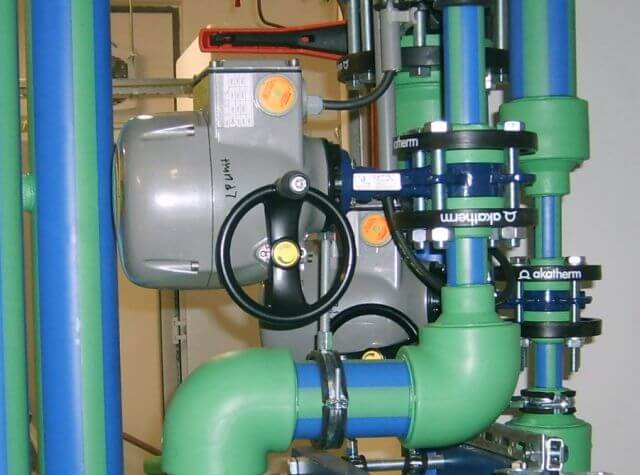Valve actuators and differential pressure sensors are integral components in modern building operations, particularly within HVAC systems. Their roles are crucial in ensuring not only the efficiency of these systems but also in maintaining indoor air quality and optimizing energy management. This article delves into how these components significantly contribute to the enhanced functionality and performance of building operations.
Valve Actuators: The Driving Force in HVAC Systems
Valve actuators, such as the Siemens 587-187, are pivotal in controlling the flow of air, water, or steam within HVAC systems. These devices act on signals from the control system to adjust the opening of valves, thereby regulating environmental conditions precisely.
- Precision Control: Actuators like the Siemens 587-187 provide precise control over valve positions, ensuring that the HVAC system responds accurately to the changing demands of the building environment.
- Energy Efficiency: By optimizing the flow and reducing the need for manual adjustments, these actuators contribute to significant energy savings and lower operational costs.
- Enhanced Comfort: The precise control offered by valve actuators leads to better regulation of temperature and humidity, enhancing comfort levels for building occupants.
Differential Pressure Sensors: Monitoring and Maintaining System Balance
Differential pressure sensors, such as the P6-0500-1LX, play a critical role in monitoring the pressure differences within HVAC systems. These sensors provide essential data that help in maintaining system balance and ensuring efficient operation.
- System Health Monitoring: Differential pressure sensors monitor the health of the HVAC system, identifying potential issues like filter clogs or duct blockages before they lead to significant problems.
- Air Quality and Flow Management: By monitoring pressure variations, these sensors help in adjusting the air flow, contributing to improved indoor air quality and ventilation.
- Energy Management: Maintaining optimal differential pressure contributes to energy efficiency, as the HVAC system can operate smoothly without overexerting itself to compensate for pressure imbalances.
Integrating Valve Actuators and Differential Pressure Sensors
The integration of valve actuators and differential pressure sensors in HVAC systems leads to a synergistic effect that enhances building operations:
- Automated System Adjustments: The combination of actuators and sensors allows for automated adjustments to the system, reducing manual interventions and improving response times to changes in building occupancy or environmental conditions.
- Predictive Maintenance: With real-time data from these components, maintenance can shift from reactive to predictive, reducing downtime and extending the lifespan of HVAC equipment.
- Holistic Energy Management: Together, these components provide a comprehensive view of the system’s performance, enabling more effective energy management and operational efficiency.
Conclusion
Valve actuators and differential pressure sensors are crucial for the efficient operation of HVAC systems in modern buildings. The Siemens 587-187 valve actuator and the P6-0500-1LX differential pressure sensor exemplify the advanced technology that underpins effective building operations, contributing to improved indoor air quality, enhanced occupant comfort, and optimized energy management. As building systems continue to evolve, the importance of integrating sophisticated components like these will only grow, leading to smarter, more efficient, and sustainable building operations.


